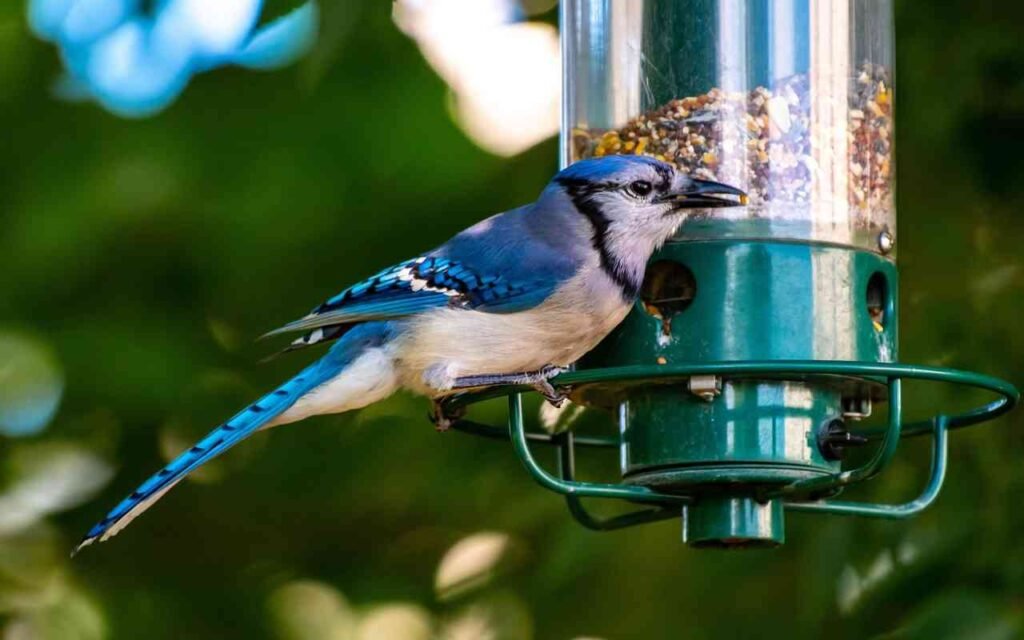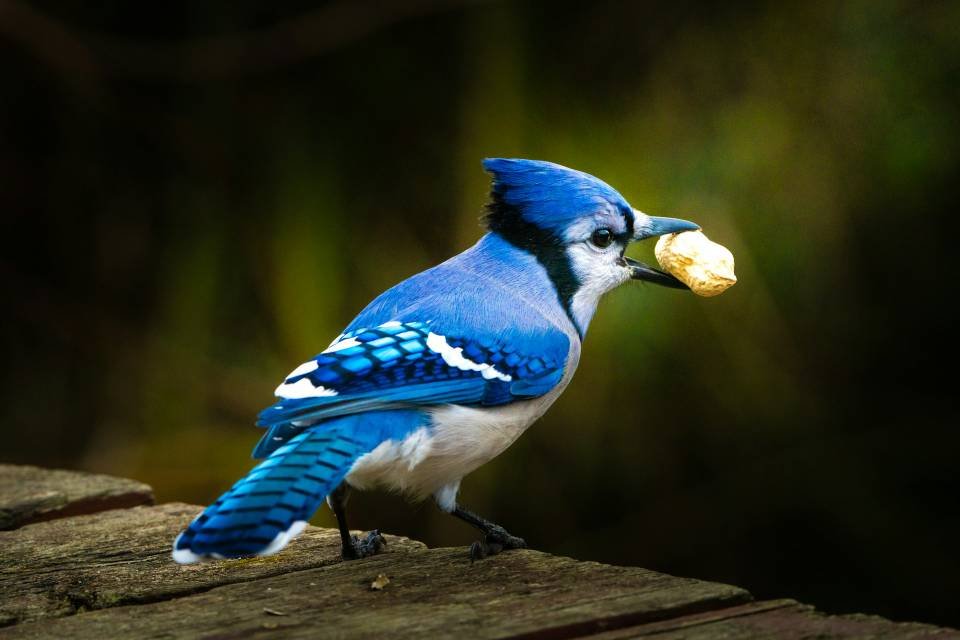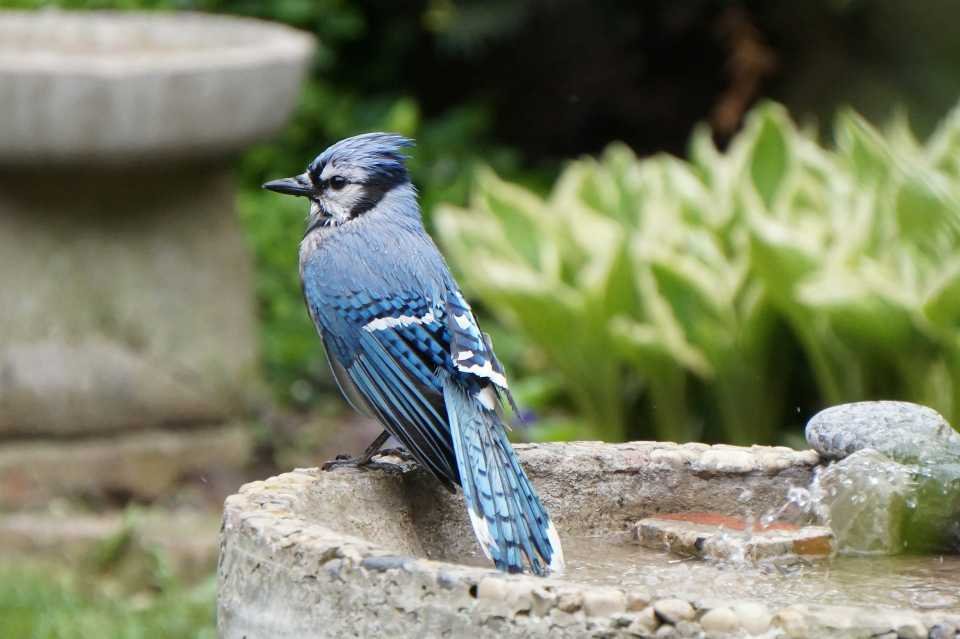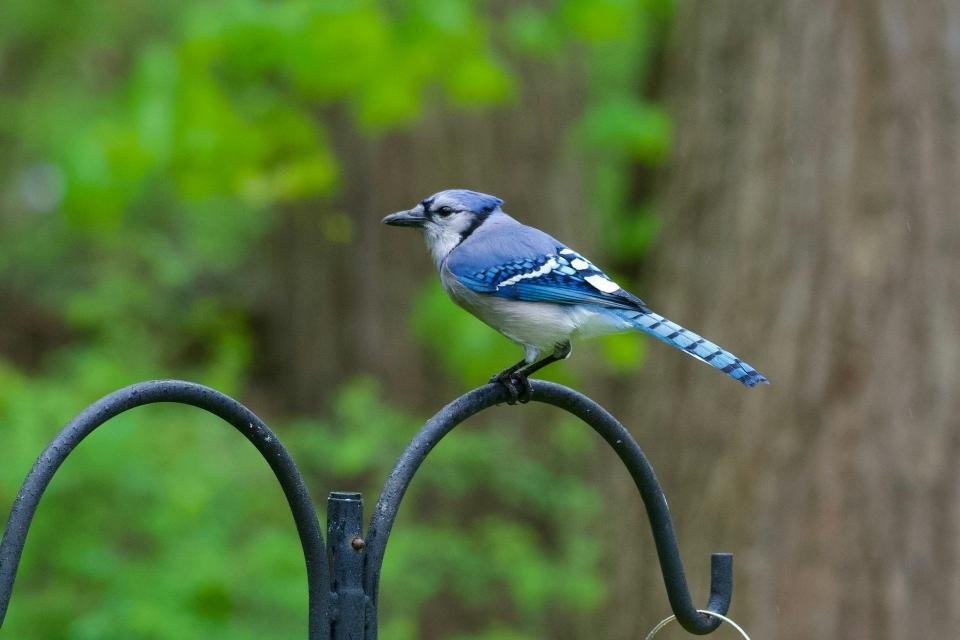If you’re wondering how to attract blue jays to your yard, you know that feeling when you spot a flash of brilliant blue darting through your neighbor’s yard while your own backyard sits sadly empty? Yeah, I’ve been there too. Blue jays are basically the corvid royalty of North American backyards, and honestly, getting them to visit feels like winning the bird-watching lottery.
I’ll never forget the first time a blue jay landed on my feeder. I was sipping my morning coffee, half-awake, when this gorgeous bird just swooped in like it owned the place. That moment got me completely hooked on creating the perfect blue jay habitat. Trust me, once you know their secrets, you’ll have these intelligent beauties treating your yard like their personal diner 😊.
Understanding Blue Jay Behavior and Preferences
Before we jump into the how-to stuff, you need to understand what makes these birds tick. Blue jays aren’t your typical backyard visitors who’ll show up for just any old birdseed. They’re incredibly smart (we’re talking puzzle-solving smart), social, and honestly a bit picky about their dining establishments. According to the Cornell Lab of Ornithology’s All About Birds, blue jays are known for their intelligence and complex social systems with tight family bonds.
These birds love routines and familiar territories. Once they decide your yard is worth visiting, they’ll often return regularly and might even bring their whole family along. But here’s the thing – they’re also naturally cautious and will scope out your setup before committing to regular visits.
Blue jays are omnivores with diverse dietary needs. They’ll munch on everything from insects and small reptiles to nuts, seeds, and even eggs from other birds (yeah, they’re a bit ruthless like that). Understanding this variety is key to creating an attractive feeding environment. For more fun tidbits about their habits and quirks, check out interesting facts about blue jays.
Creating the Perfect Blue Jay Feeding Station
Choosing the Right Feeders
Platform feeders are absolutely your best bet for attracting blue jays. These birds prefer to land, assess the situation, and eat comfortably rather than clinging to tiny perches like finches do. I learned this the hard way after watching blue jays struggle with my cute little tube feeder for weeks 😕.
According to PerkyPet, platform feeders offer an open flat tray that accommodates larger birds more comfortably, making them one of the most effective feeder types for species like blue jays.
Large hopper feeders also work well, especially ones with wide landing areas. The key is giving these substantial birds (they’re about 12 inches long) enough room to feel secure while feeding. Avoid anything too small or wobbly – blue jays will literally turn their beaks up at uncomfortable dining situations.
Ground feeding works too, but you’ll want to use a large platform or simply scatter food in open areas. Just remember that ground feeding might attract other animals you’re not planning to host.
Strategic Feeder Placement
Location matters more than you might think. Blue jays prefer feeders placed 10-12 feet from dense shrubs or trees where they can quickly escape if needed. They’re not fans of completely open areas where they feel exposed, but they also won’t approach feeders tucked too deeply into vegetation.
I positioned my main feeder about eight feet from a large oak tree, and it was like flipping a switch. Within days, I had regular blue jay visitors who clearly felt comfortable with the setup. The trick is finding that sweet spot between safety and accessibility.
Height-wise, aim for 5-6 feet off the ground. This gives blue jays easy access while keeping the feeder at a comfortable level for you to maintain and observe.
The Ultimate Blue Jay Menu
Premium Nuts and Seeds
Peanuts are basically blue jay candy. I’m talking whole peanuts, peanut pieces, and especially unsalted, shelled peanuts. These birds will go absolutely crazy for them. Sunflower seeds (both black oil and striped) are another guaranteed hit. According to BirdWatching Daily, offering peanuts and sunflower seeds in your feeders is one of the most effective ways to attract blue jays.
Acorns and other tree nuts work wonderfully too, especially during fall when blue jays are naturally caching food for winter. If you have oak trees nearby, collecting a few acorns to offer can really make your feeding station feel like a natural food source.
Cracked corn is budget-friendly and effective, though it might also attract squirrels (which could be good or bad depending on your perspective). Mix it with other offerings rather than serving it solo.
Protein-Rich Options
During breeding season (spring through early summer), blue jays need extra protein. Mealworms – either dried or live – provide exactly what they’re looking for. You can also offer small pieces of hard-boiled eggs or even bits of meat scraps.
I’ve had success with suet, especially during colder months. Look for high-quality suet cakes with nuts and seeds rather than basic fat-only versions. Blue jays appreciate the extra nutrients and variety.
Water Features That Work
Don’t overlook water – it’s honestly just as important as food for attracting blue jays. These birds need water for drinking and bathing, and a good water source can be the deciding factor that makes them regular visitors.
Moving water is magic for attracting birds. A simple dripper, small fountain, or even a recirculating pump in a birdbath creates the sound that draws blue jays from surprising distances. According to All About Birds, moving water sources like fountains or drippers significantly increase bird activity, including blue jays. I added a small solar fountain to my birdbath last spring, and my blue jay activity literally doubled within a week.
Keep water sources clean and fresh – here’s how to clean a bird bath without chemicals. Blue jays are particular about water quality, and stagnant or dirty water will send them looking elsewhere. During winter, a heated birdbath becomes incredibly valuable when natural water sources freeze.
Creating Blue Jay-Friendly Habitat
Native Plant Landscaping
Blue jays have evolved alongside specific native plants, and incorporating these into your landscaping pays off big time. Oak trees are absolute gold – they provide acorns, nesting sites, and attract the insects blue jays love hunting. According to the National Wildlife Federation, planting native trees like oaks not only supports blue jays but also boosts overall backyard biodiversity.
Other native options include elderberry, serviceberry, and sumac – check out our guide to native plants for birds for more ideas. These plants offer natural food sources while creating the layered habitat structure that makes blue jays feel secure. Plus, you’ll be supporting local ecosystems beyond just attracting birds.
Dense shrubs and bushes provide crucial cover and nesting opportunities. Blue jays prefer to build nests in thick vegetation about 10-20 feet off the ground, so mature landscaping really helps establish your yard as suitable habitat.
Nesting Support
Speaking of nesting, you can actively support blue jay families by providing nesting materials during breeding season. Leave out small twigs, soft grass, and even pet fur (clean and pesticide-free, obviously).
Blue jays build sturdy stick nests, so having dead branches and natural debris available makes your property more attractive to breeding pairs. I keep a small pile of yard waste in a corner specifically for birds to use as building materials.
Timing Your Blue Jay Attraction Efforts
Seasonal Considerations
Fall and winter are prime times for establishing blue jay relationships. During these seasons, natural food sources become scarce, making your feeder setup incredibly appealing. Blue jays also cache food during fall, so they’ll appreciate having reliable sources to stock up from.
Spring brings breeding season, when blue jays become more territorial but also more protein-focused. This is when offering varied food options really pays off. Summer can be trickier since natural food is abundant, but maintaining consistent water sources keeps you relevant and helps your birds stay hydrated during the hottest months.
Daily Feeding Schedules
Blue jays are typically most active during early morning and late afternoon. Try to keep feeders stocked during these peak times. I’ve noticed my blue jays often show up within an hour of sunrise and again a few hours before sunset.
Consistency matters enormously. Blue jays remember reliable food sources and will adjust their daily routes accordingly. Skip a few days of feeder maintenance, and you might find yourself starting over with building their trust.
Dealing with Blue Jay Challenges
Managing Aggressive Behavior
Let’s be honest – blue jays can be bullies at the feeding station. They’ll chase away smaller birds and basically act like they own the place. IMO, this is just part of having blue jays around, but you can minimize conflicts by offering multiple feeding stations spaced apart.
Separate feeders for different bird types helps everyone coexist. I keep one platform feeder specifically for blue jays and larger birds, while maintaining tube feeders in different areas for smaller species. This approach reduces competition and keeps peace in the backyard. According to Perky Pet, blue jays can dominate feeders, but offering multiple feeding stations helps reduce conflict with smaller species.
Squirrel Competition
Blue jays and squirrels often compete for the same foods, especially nuts and seeds – if you want to manage this, see our tips on how to keep squirrels away from bird feeders. Rather than trying to exclude squirrels entirely (good luck with that), consider embracing both species. Large platform feeders can accommodate both, and honestly, watching the interactions can be pretty entertaining.
If squirrel dominance becomes a real problem, try weight-activated feeders or caged designs that allow blue jay access while limiting squirrel opportunities.
Common Blue Jay Attraction Mistakes
Inconsistent Feeding
The biggest mistake I see people make is inconsistent feeder maintenance. Blue jays scout for reliable food sources, and empty feeders send them looking elsewhere pretty quickly. Keep feeders stocked, especially during the initial attraction phase when you’re building relationships with local birds.
Wrong Food Choices
Cheap seed mixes filled with filler ingredients won’t cut it with blue jays. These intelligent birds know quality when they see it, and they’ll ignore inferior offerings. Invest in premium nuts, seeds, and protein sources that meet their nutritional needs.
Inadequate Cover
Placing feeders in completely open areas without nearby escape routes will keep blue jays away. They need to feel secure while feeding, which means providing adequate cover within reasonable distance of food sources.
Ever wonder why some yards seem to naturally attract blue jays while others remain empty? It usually comes down to these habitat considerations that many people overlook.
Long-Term Success Strategies
Building Bird Community
Blue jays often travel in family groups and small flocks, so attracting one usually means you’ll eventually host several. Be patient with the process – it can take weeks or even months to establish regular visitors, but the payoff is absolutely worth it.
Document your successes and challenges. I keep a simple bird journal noting what foods work best, timing patterns, and seasonal changes in behavior. This information helps me continuously improve my blue jay attraction strategies.
Maintenance and Seasonal Adjustments
Clean feeders regularly to prevent disease and maintain food quality. Blue jays are particular about cleanliness, and dirty feeders will drive them away faster than almost anything else.
Adjust your offerings seasonally. Heavy emphasis on nuts and high-energy foods during fall and winter, more protein options during spring breeding season, and consistent water sources during hot summer months.
Wrapping Up Your Blue Jay Journey
Attracting blue jays requires more strategy than tossing out random birdseed and hoping for the best. These intelligent, beautiful birds reward thoughtful habitat creation and consistent care with regular visits and incredible backyard entertainment.
The investment in quality food, proper feeders, and suitable habitat pays off when you’re watching a family of blue jays teaching their young to use your feeding station. There’s something deeply satisfying about earning the trust of these cautious, intelligent birds.
Start with the basics – platform feeders, quality peanuts and seeds, reliable water sources, and strategic placement near cover. Build from there based on what works in your specific location and with your local blue jay population. Before you know it, you’ll be that neighbor with the amazing blue jay visitors that everyone asks about 🙂





